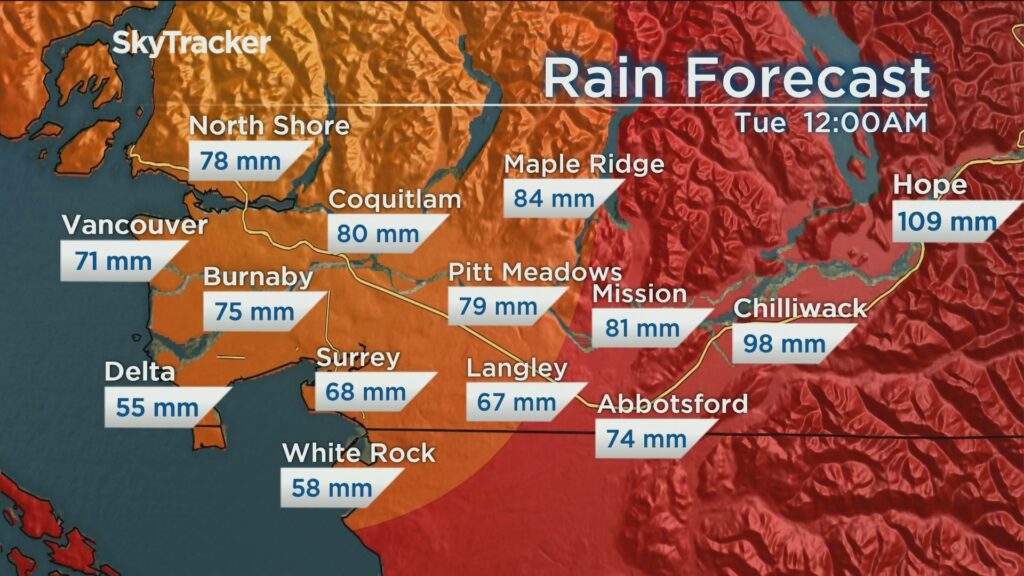
Introduction
As of October 2023, British Columbia is experiencing significant rainfall warnings due to an incoming atmospheric river system. These warnings are crucial for residents and local authorities as they anticipate potential flooding, landslides, and road hazards. With the province’s diverse geography and its history of severe weather patterns, staying informed is essential for public safety and preparedness.
Current Weather Situation
According to Environment and Climate Change Canada, the rainfall warning in British Columbia covers various municipalities including Metro Vancouver, the Fraser Valley, and parts of Vancouver Island. Forecasts predict rainfall amounts could reach up to 100 mm in some areas over the coming days. This influx of moisture is associated with a robust atmospheric river that is expected to impact the province starting late today and continuing into the weekend.
Impact on Communities
The anticipated heavy rainfall poses risks to infrastructure and public safety. Local municipalities are ramping up their emergency preparedness plans, ensuring that drainage systems are clear and ready to handle excess water. Citizens are advised to prepare for possible power outages, road closures, and transportation disruptions. Emergency services are on high alert, and residents are urged to stay informed through local news and weather updates.
Historical Context
British Columbia has a history of dealing with severe weather events, particularly during the fall and winter months. Last year, the province faced a series of storms that caused significant flooding and damage, leading to widespread evacuations and road washouts. These events highlight the importance of being proactive and ready for emergencies, which is particularly relevant given the current warnings.
Conclusion
The rainfall warning in British Columbia serves as a reminder of the region’s vulnerability to severe weather conditions. Preparedness is critical as residents are advised to stay updated on weather alerts and guidelines from local authorities. As climate patterns shift, it is expected that such weather events may become more frequent, emphasizing the significance of infrastructure resilience and community readiness in mitigating potential risks from heavy rainfall.

